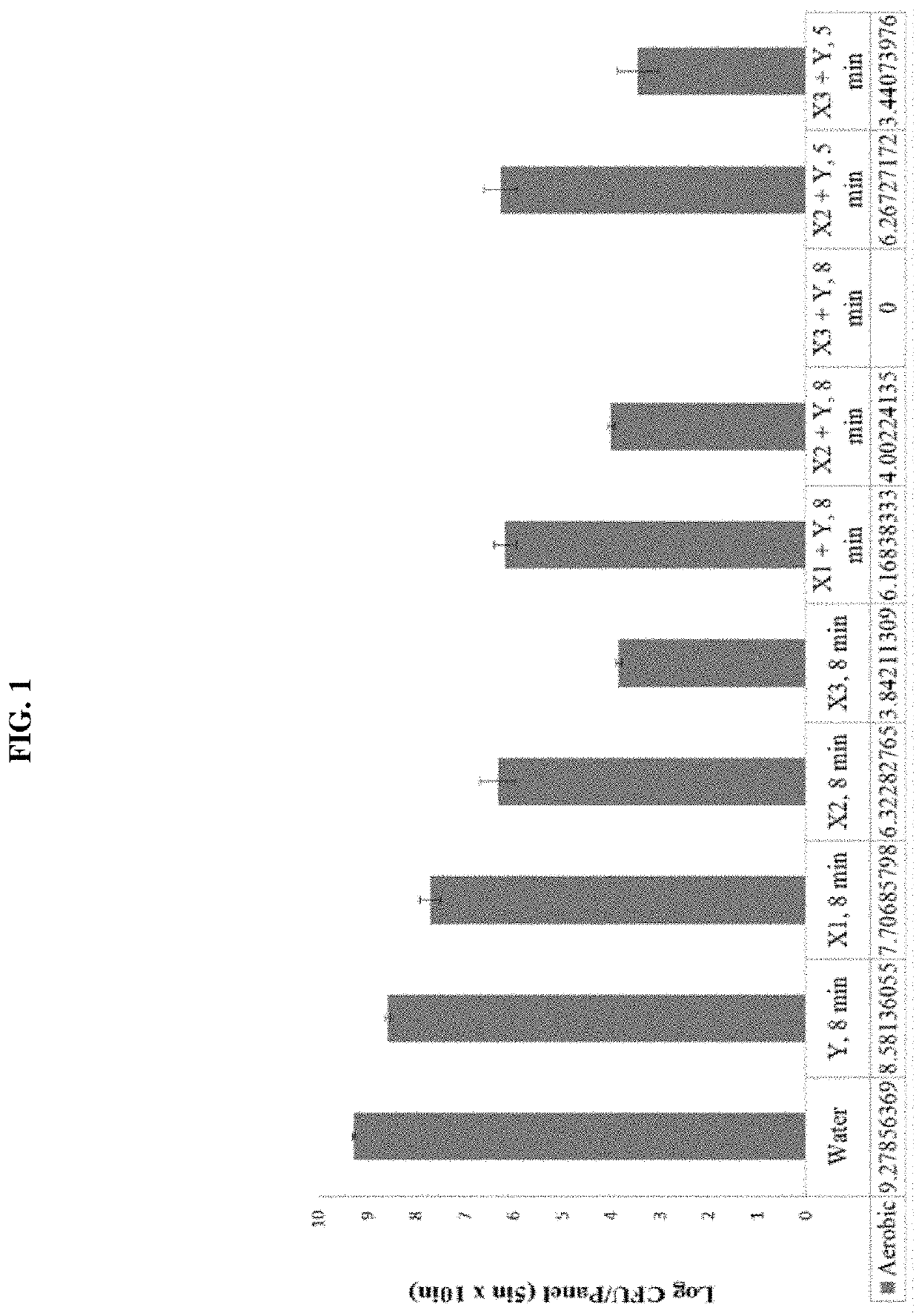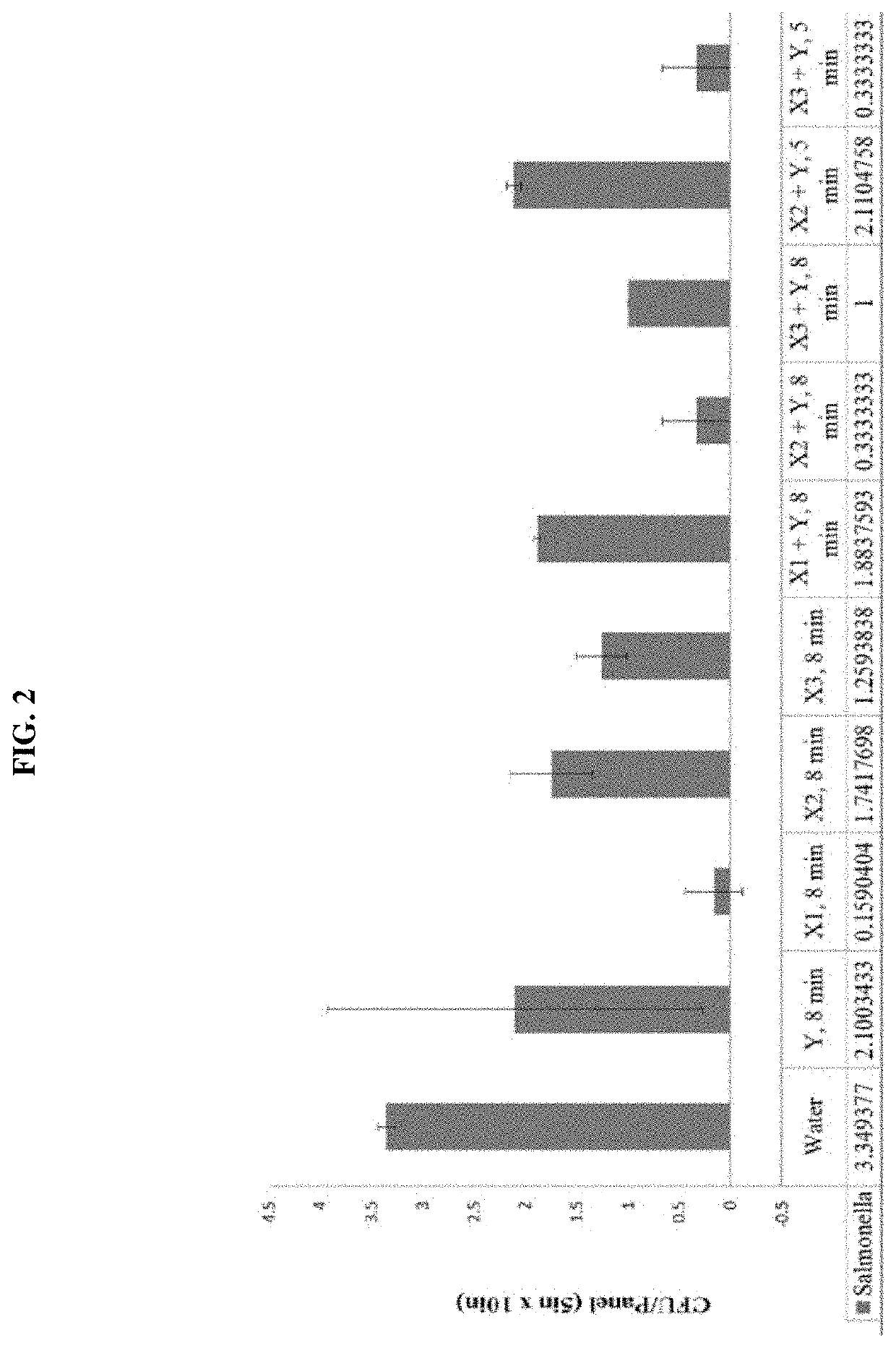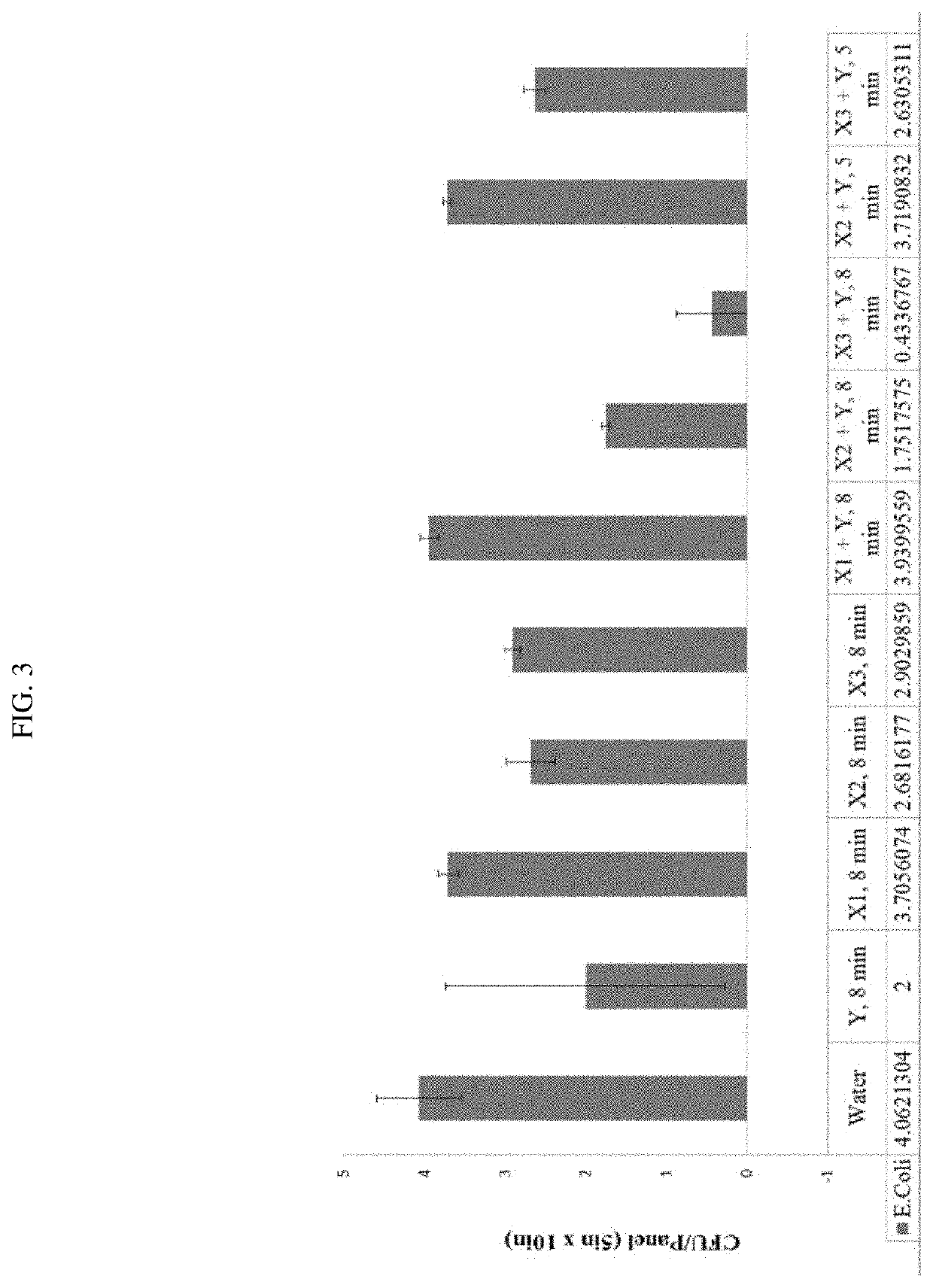Composition and method to clean and decontaminate animal carcasses
a technology for cleaning and decontamination of animal carcasses, applied in the field of new methods, can solve the problems of destroying valuable hides, deteriorating hide quality, and holes in hides, and achieve the effects of reducing the risk of cross-contamination of bacterial populations, preserving the integrity and quality of hides, and savoring meat products
- Summary
- Abstract
- Description
- Claims
- Application Information
AI Technical Summary
Benefits of technology
Problems solved by technology
Method used
Image
Examples
example 1
[0049]Aqueous formulations tested are shown in Table 2 in terms of wt % for each component.
TABLE 2FormulationCompositionX1: Low concentration2.5% NaOH + 2.5% K-thioglycolateremoval solutionX2: Medium concentration5% NaOH + 5% K-thioglycolateremoval solutionX3: High concentration7.5% NaOH + 7.5% K-thioglycolateremoval solutionY: Anti-Microbial solution0.75% sodium dichloroisocyanuratedihydrate
[0050]Formulations from Table 2 were sprayed on bovine hide samples with mud balls naturally attached. After 5 or 8 minutes hide samples were brushed to wipe off the external debris from the hide surface using a soft brush. The tested formulations were effective to quickly convert the mud balls to a state to enable removal by using only a soft bristle brush.
[0051]The individual chemicals (K-thioglycolate, sodium dichloroisocyanurate dihydrate) used for this inventive formulation of the example have pungent odors. These odors generally present limitations for using them individually in different ...
PUM
 Login to View More
Login to View More Abstract
Description
Claims
Application Information
 Login to View More
Login to View More - R&D
- Intellectual Property
- Life Sciences
- Materials
- Tech Scout
- Unparalleled Data Quality
- Higher Quality Content
- 60% Fewer Hallucinations
Browse by: Latest US Patents, China's latest patents, Technical Efficacy Thesaurus, Application Domain, Technology Topic, Popular Technical Reports.
© 2025 PatSnap. All rights reserved.Legal|Privacy policy|Modern Slavery Act Transparency Statement|Sitemap|About US| Contact US: help@patsnap.com



